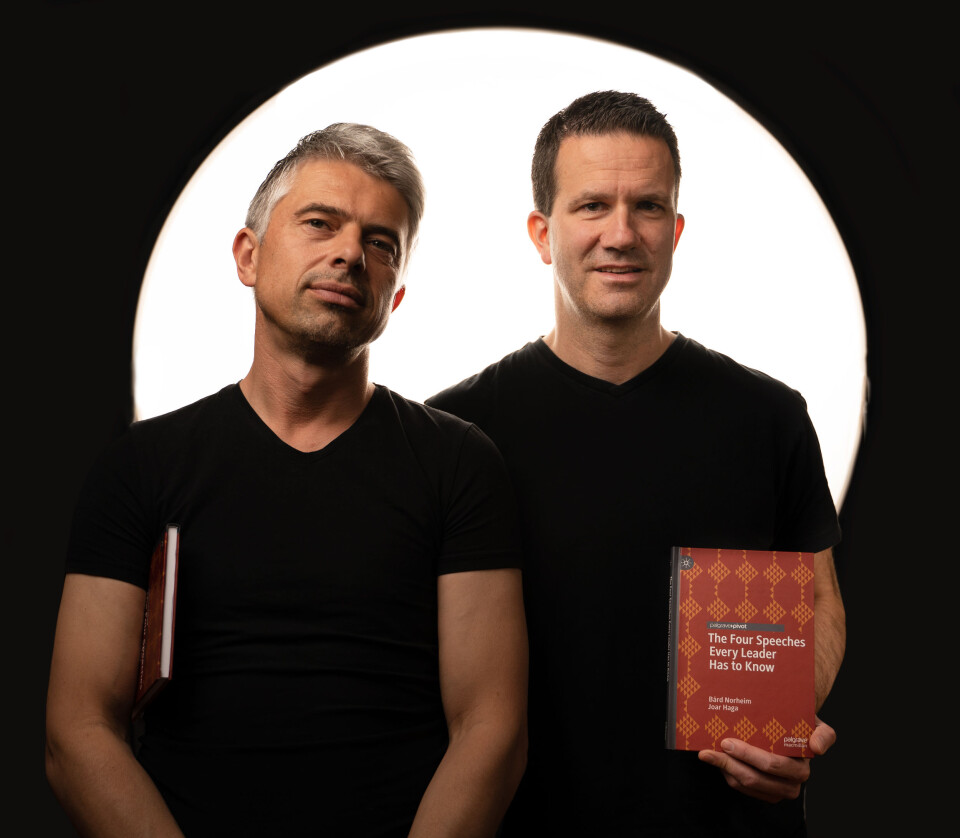This article is produced and financed by NLA University College - read more

Should climate activists stop scaring their audiences?
VIDEOPODCAST: 16-year old Greta Thunberg is in despair over how hard it is to create awareness and action on the climate crisis. So how should a speaker convince his or her audience to change actions and attitudes in the climate question?
Renowned Swedish climate activist, 16-year-old Greta Thunberg, is in despair over how difficult it is to generate commitment to the climate crisis. On Monday, September 23, she gave a speech to world leaders at the UN Climate Summit in New York, where, upset about their lack of commitment to the climate issue, she asked: “How do you pretend that this can be solved with ‘business as usual’ and some technical solutions? (...) If you choose to fail us, we will never forgive you.” Impassioned? Certainly. But is it likely to elicit the changes she desires? Time will, of course, tell. Nevertheless, it does raise the question: how can a speaker convince audiences to change actions and attitudes regarding a given issue, in this case the climate crisis?
Based on their recent research on leadership and rhetoric, researchers Bård Norheim and Joar Haga explain the challenges of engaging one’s listeners when speaking about climate concerns.
“Talking about change is challenging. Why should the audience give in to something that will cost them renunciation and suffering?” Haga asks.
To address suffering and devotion is one of the main challenges when talking about the climate crisis, the two researchers underscore. This is because it can be difficult to convince listeners that they must act in the present to fight a future threat.

Yet, confronted by the climate crisis, what is the future hope given, for which the audience is asked to suffer? In her November 2018 TEDx speech in Stockholm, Thunberg argued that instead of looking for hope, one should look for action, as “[t]hen, and only then, hope will come.”
Getting people to give up
In their research, Norheim and Haga have studied hundreds of different speeches – from business leaders to leaders in politics, sports, NGOs and other fields. They have identified four different types of speeches that every leader should know: the opening speech, the executioner speech, the consolation speech and the farewell speech.
To appear persuasive, the speaker must convince the audience why a particular cause is worth one’s dedication and energy. The speaker must make the case that the future envisioned is worth fighting for in the present. “Good speakers persuade people to join in a cause, even though this cause may involve suffering,” says Norheim. “But when the speakers appeal to the audience’s devotion, this appeal must be based on free will. The appeal cannot appear coercive.”
Inevitable suffering “The fundamental thing here is that suffering is an inevitable part of life. Change is inevitable and often painful. As humans, we are inextricably bound to these changes. If you want to convince your listeners, you want to appear credible. That means you must speak with authority and portray reality as it really appears to people. It is not enough to tell a success story,” explains Joar Haga.
Haga uses climate change as an example. “The climate crisis is not a success story. Thunberg describes the reality of climate with both seriousness and conviction. The problem is that scaring your audience may also paralyze them. If the audience is left with the feeling that it is of no use, it often leads to paralysis and inactivity.” Norheim adds, “Part of the problem when it comes to the climate crisis is that it is not always clear what the audience should do to solve the problem. Ought the listeners to stop flying, should they stop eating meat or should they plant more trees?”
Vision for the future
For a leader, the purpose of the opening speech is to offer a persuasive vision for the future, a vision that invites the audience to give their time, energy and talent. In short, the leader has to offer a vision that is grand enough to be worth suffering for.
“There is no guarantee of success. Most people know that painful changes need to be made on the path to a brighter future. But again, what future hope does the climate crisis trigger?” asks Haga.
The opening speech is not a one-time event, delivered only when a leader takes up position. Leaders should continue to offer variations of the opening speech. They can do this at lunch meetings with employees, in gatherings with shareholders and owners, and when meeting with the media or other audiences, all while continuing to faithfully interpret and communicate the vision of the original opening speech.
Executioner speech The executioner speech refers to how leaders should speak when it is necessary for them to inflict suffering with the words they will share. This occurs every time leaders communicate painful decisions, such as in firing an employee or announcing budget cuts.
“Here the challenge is to convey why the inflicted suffering is necessary. Good leaders are able to communicate to remaining employees after an announced downsizing how the company is still worth their energy and dedication. In the event of layoffs and budget cuts, it is crucial that the leader manages to convey that the company still constitutes a community and has a cause that is worth suffering for,” Norheim emphasizes.
“The problem for Greta Thunberg and other climate activists,” Norheim continues, “is that, in terms of genre, future-oriented, political speeches about the climate crisis – speeches which should have been opening speeches – easily become executioner speeches. If you want to start with an executioner speech, you must also clearly communicate why the suffering inflicted is necessary even as you enable future hope for the audience.”
In other words, if you want to inspire your audience to action, you should probably not act as an Old Testament prophet.
Consolation
In some situations, suffering may be inflicted on the organization or the company from the outside. Examples of this include when a worker passes away or when a tragedy strikes. How, then, should the leader talk about suffering?
The researchers emphasize that it is especially important that the leader appears trustworthy on such occasions. Whether the leader will appear persuasive largely depends on whether the leader is able to describe the experienced reality in a credible way.
“In these situations,” says Haga, “it is particularly important that the leader is aware of which stories and metaphors will be appropriate.”
Goodbye
When a leader departs, the ring is closed. What she talked about in her opening speech — the envisioned future worth suffering for — is now employed a final time. This serves to activate the legacy of that vision and ensures the audience why it still is worth suffering for.
As Haga states, “even though the leader herself does not carry on, those who hear her need to know why the legacy of the company is still something to be proud of. The departing leader must therefore point out that what they have accomplished together, what they have fought for — for example, the hope of better future in the face of the climate crisis —is something still worth suffering for.”
Reference:
Bard Eirik Hallesby Norheim og Joar Haga: The Four Speeches Every Leader Has to Know. Palgrave Macmillan, 2019. (Summary)







